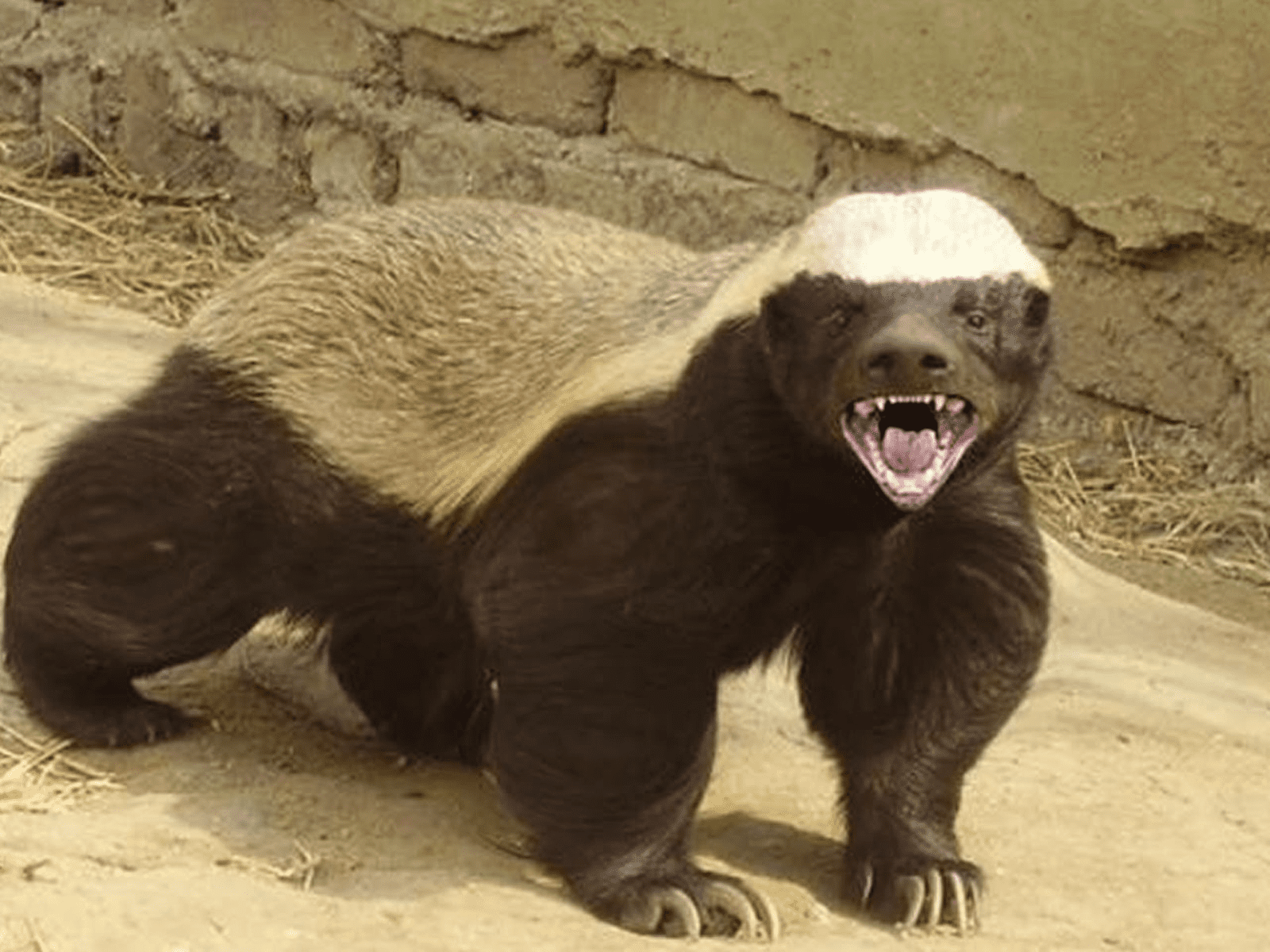
16 Sep Discovering Your Inner Honey Badger
If your muscular nicotinic cholinergic receptor has evolved so it will not bind to a-neurotoxins, then you are lucky that you will be able to fend off snake venom like a mosquito bite. You will also be joining the elite ranks of pigs, hedgehogs, and honey badgers, who have over the millennia, enjoyed the biochemical mechanism to be immune to snake attacks. And if snakes sit well within your palette of acquired taste, they are also a good source of protein. If evolution has engineered cheetah cubs to look like honey badgers to prevent attack, then you know that the honey badger is on the right track for survival and longevity.
Survival and longevity are our holy grails in business. Especially when our businesses operate in an extremely competitive and unforgiving landscape. It seems the rules underpinning the animal kingdom are somewhat replicated in the business world in which we operate and rely upon for our very existence.
Hospitality, manufacturing, cross border trade, farming, professional services, health, logistics and commercial enterprises are not immune to the predator behaviour that lurks in regulation, camouflaged by disruptive innovation, imposed by macro-economic reforms and even blindsided by pandemics.
A critical reviewing your business for resilience and grit is like analysing your operational and managerial DNA blueprint to seek if it carries the elixir to enhance survival, replication, and growth. It is almost a universal checklist, a rolodex of characteristics that has been tried and tested over aeons within the world of animalia that will determine the ultimate fate and destiny of any business.

(Fishing trawlers off Sermq Kujalleq GREENLAND) – risk averse?
Co-operating cells became the first animals which DNA evidence suggests evolved around 800 million years. So, what can we learn from the animal kingdom that can bring resilience into the business world? And what better species to focus on than our favourite honey badger.
First, a few key facts about honey badgers.
- Their adaptability is incredulous ranging from warm rain forests to cool mountains. Climate change is already in their DNA.
- “Mi casa es tu casa” Their home can range 500 square kilometres and can comfortably steal the dens of other animals like mongooses, foxes, aardvarks or springhares.
- Mind your fingers. Their bite is strong enough to eat through tortoise shell.
- They are intelligent and have the capacity to use tools (even to escape if captured).
- They host a dangerous gland at the base of their tail for defence and marking territory. Do not test their defence mechanism at any cost.
- They are aggressive and will even happily pick a fight with a porcupine.
- They know their limitations and their foes which include lions, hyenas, pythons and leopards (and humans) which they quite happily avoid.
- They will eat anything. Anything and everything (like mammals, birds, larvae, reptiles (snakes), plants, roots, fruit, and eggs.
- They are thick skinned to the point where even arrows can deflect off their thick loose rubbery epidermis as well as sporting a rolling manoeuvre to escape from the jaws of a predator.
- They are solitary animals. They rely on no-one for survival.
It seems the traits of the honey badger can resemble a strong and vibrant business. The similarities are quite uncanny with a spirited imagination. In context to business this would include the ability to operate with;
- a capacity for diversity in geographics,
- a capacity for diversity in resources being utilised or consume to operate,
- support of a developed risk mitigation protocol (survival mechanisms) being in place,
- the intelligent application of resources,
- adaptability
- independence and non-reliance and third parties for survival,
- profound knowledge of your threats and weaknesses (like your life depended on it).
- a critical point of difference which is extremely difficult to replicate for survival. For honey badgers it is their immunity to snake venom. With no competing activity for snakes as a food source, it qualifies as a reliable food source makes up a quarter of their diet. For business it could be intellectual IP, goodwill, innovative technology, patents, ownership of scarce resources (farmland), licencing etc.
The answers that we seek for continual business improvement has been evolving before us for the last 800 million years. Perhaps a good hike in the wilderness will assist in expressing the application of new ideas. After all the flora and fauna that we see today have had to overcome evolutionary environmental calamities beyond our comprehension.



Sorry, the comment form is closed at this time.